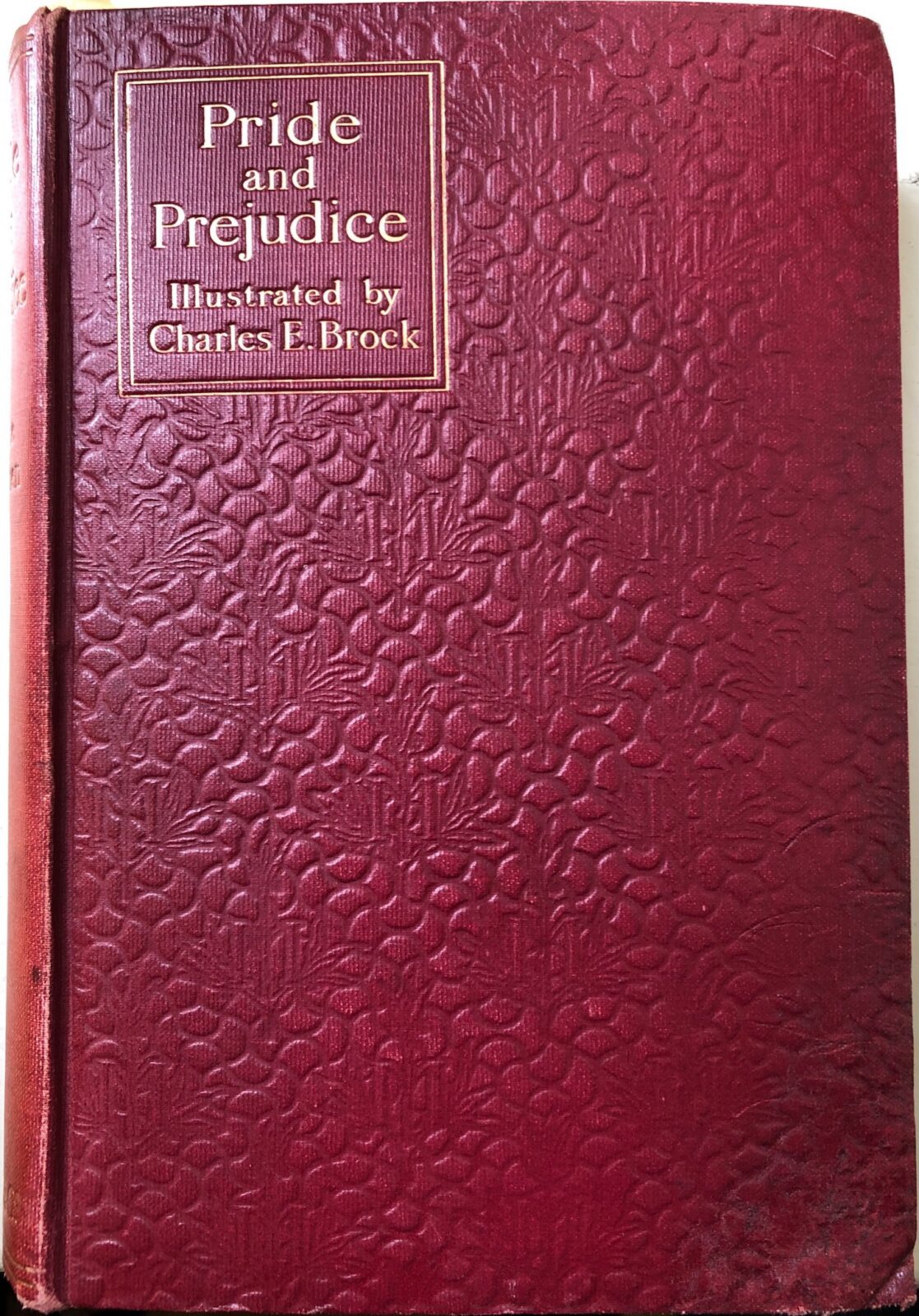Room 2: Charles E. Brock
1895 Charles E. Brock – published by MacmillanSecondly, we have the illustrator Charles E Brock, who illustrated Macmillan’s 1895 edition of Pride & Prejudice. At the time, Brock was considered a specialist in delicate Regency-style period illustration, not only was he famous for illustrating Jane Austen’s novels, but also the works of William Thackery, Jonathan Swift and even Charles Dickens! The publisher, Macmillan, approached Brock to illustrate their new edition of Pride & Prejudice after the success of his pen and ink illustrations for Gulliver’s Travels (1894).
Brock was predominantly a line artist, using a cross-hatching technique to create shading – for example if we look at Mr Darcy’s coat we can clearly see the overlapping lines in the creases of the fabric. The closer the lines are drawn to each other, the darker the shading – this is known as cross-hatching. If Brock’s art style looks familiar, it is because Brock was inspired by the style of Hugh Thomson.
Although many publishers in later years have commented on how the two illustrators differ, for example:
‘Brock often achieves a telling interaction between his characters, where Thomson’s are often, in comparison, listless. . . And in general, Brock makes much more use of body language, his figures have more eye contact with one another, his style has a theatrical and often comic dynamism Thomson’s lack’
– Laura Carroll and John Wiltshire, ‘Jane Austen Illustrated’ (2009) pp. 74-75
Like Thomson, Brock created his illustrations in the Victorian era. This is evident in the clothes of the characters, such as the fur hand muff that Elizabeth Bennet holds in this illustration. This also indicates how Brock has interpreted this scene to take place in the winter, as hand muffs like these were used as a practical item to keep women’s hands warm on cold winter walks.
Below are some illustration highlights from the rest of the publication:



